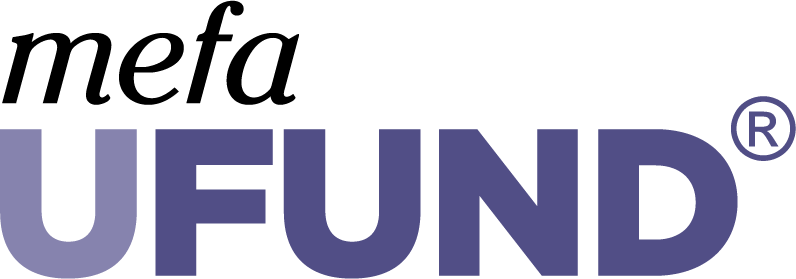The Massachusetts 529 College Savings Plan
MEFA's U.Fund allows you to save for your child's education in a flexible, tax-advantaged account. You can use your savings to pay for qualified education expenses at any eligible institution in the country. There's no minimum to open an account, and you can set up a gifting page so that others can contribute.
BabySteps Savings Plan
Every child born or adopted in Massachusetts is eligible to receive a free, $50 deposit into a U.Fund 529 College Investing Plan account thanks to the BabySteps Savings Plan. Families simply need to open a U.Fund account within one year of the child's birth or adoption to receive their $50. No additional contributions are necessary.
BabySteps is managed by the Massachusetts Treasurer and Receiver General's Office of Economic Empowerment.
Features of the U.Fund 529 College Savings Plan


4 Things to Know About How the U.Fund Works
1. Opening an Account
- You can open an account with any amount.
2. Contributions
- Investment options include a target date strategy based on the age of the beneficiary and a custom strategy that you create based on your investment objectives.
- An account can have only one beneficiary, so each child should have a separate U.Fund account.
- Family members can add to your 529 account through College Gifting.
3. Using Your Savings
- Savings can be used for an undergraduate or graduate program at any college or university that is eligible to participate in a student aid program administered by the U.S. Dept of Education. Up to $10,000 per year can be applied toward tuition expenses for elementary, middle, and high schools (private, public, or religious). Although the money may come from multiple 529 college savings plan accounts, it will be aggregated on a per-beneficiary basis, and any distribution amount in excess of $10,000 will be subject to income and a 10% federal penalty tax. Learn about spending your 529 funds here.
- If the designated beneficiary decides not to attend college, you may take a non-qualified withdrawal (earnings are subject to federal income taxes and a 10% federal penalty) or change the beneficiary without penalty to any of the following family members of the original beneficiary: son or daughter, stepson or stepdaughter, brother or sister, stepbrother or stepsister, father or mother, ancestor of father or mother, stepfather or stepmother, son or daughter of brother or sister, brother or sister of father or mother, son- or daughter-in-law, father- or mother-in-law, brother- or sister-in-law, spouse of original beneficiary or of any individual listed above, first cousin.
4. Tax Benefits
- Earnings are not taxed as they accumulate, and withdrawals are tax-free when used for qualified education expenses, which include tuition, required fees, books, food and housing (for students attending at least part time), and required supplies and equipment at a college or university, and tuition only at a K-12 institution.
- Massachusetts residents saving in the U.Fund can claim a MA state income tax deduction of up to $1,000 for single filers and up to $2,000 for married persons filing jointly. Note your deduction on Schedule Y (the income modifications/deductions section on most tax software).
Who is Eligible for the U.Fund 529 Savings Plan?
Anyone can open an account in the U.Fund. It doesn't matter which state you live in, and the beneficiary can be anyone you choose — a relative, a friend, or even yourself. You can change the beneficiary at any time to a family member of the original beneficiary.
All U.Fund account owners must be citizens or permanent residents of the United States
How to Enroll in the U.Fund 529 Savings Plan
It's easy to open an account in the U.Fund. To learn more, visit the Fidelity Investments website.
Transfers and Rollovers
You can invest in a U.Fund account using assets from an existing UGMA, UTMA, or another state's 529 college savings plan account:
From a UGMA or UTMA Account
To transfer assets from a Uniform Gifts to Minors Act or Uniform Transfers to Minors account, first liquidate the UGMA/UTMA account assets and pay any applicable taxes, fees, and expenses. Then, invest the cash in a UGMA/UTMA 529 plan account, which is subject to the rules for both types of accounts. You may want to consult a tax professional regarding your specific tax situation. (Note that you may not change the beneficiary of a UGMA/UTMA 529 college savings plan account.)
From a 529 College Savings Plan
To roll over assets from another state's 529 plan into a U.Fund account, download the Fidelity College Investing Plan Rollover Form or call 800-544-2776. You may roll over a 529 plan account for each beneficiary once during any 12-month period.
4 Things to Know About How the U.Fund Works
1. Opening an Account
- You can open an account with any amount.
2. Contributions
- Investment options include a target date strategy based on the age of the beneficiary and a custom strategy that you create based on your investment objectives.
- An account can have only one beneficiary, so each child should have a separate U.Fund account.
- Family members can add to your 529 account through College Gifting.
3. Using Your Savings
- Savings can be used for an undergraduate or graduate program at any college or university that is eligible to participate in a student aid program administered by the U.S. Dept of Education. Up to $10,000 per year can be applied toward tuition expenses for elementary, middle, and high schools (private, public, or religious). Although the money may come from multiple 529 college savings plan accounts, it will be aggregated on a per-beneficiary basis, and any distribution amount in excess of $10,000 will be subject to income and a 10% federal penalty tax. Learn about spending your 529 funds here.
- If the designated beneficiary decides not to attend college, you may take a non-qualified withdrawal (earnings are subject to federal income taxes and a 10% federal penalty) or change the beneficiary without penalty to any of the following family members of the original beneficiary: son or daughter, stepson or stepdaughter, brother or sister, stepbrother or stepsister, father or mother, ancestor of father or mother, stepfather or stepmother, son or daughter of brother or sister, brother or sister of father or mother, son- or daughter-in-law, father- or mother-in-law, brother- or sister-in-law, spouse of original beneficiary or of any individual listed above, first cousin.
4. Tax Benefits
- Earnings are not taxed as they accumulate, and withdrawals are tax-free when used for qualified education expenses, which include tuition, required fees, books, food and housing (for students attending at least part time), and required supplies and equipment at a college or university, and tuition only at a K-12 institution.
- Massachusetts residents saving in the U.Fund can claim a MA state income tax deduction of up to $1,000 for single filers and up to $2,000 for married persons filing jointly. Note your deduction on Schedule Y (the income modifications/deductions section on most tax software).
Who is Eligible for the U.Fund 529 Savings Plan?
Anyone can open an account in the U.Fund. It doesn't matter which state you live in, and the beneficiary can be anyone you choose — a relative, a friend, or even yourself. You can change the beneficiary at any time to a family member of the original beneficiary.
All U.Fund account owners must be citizens or permanent residents of the United States
How to Enroll in the U.Fund 529 Savings Plan
It's easy to open an account in the U.Fund. To learn more, visit the Fidelity Investments website.
Transfers and Rollovers
You can invest in a U.Fund account using assets from an existing UGMA, UTMA, or another state's 529 college savings plan account:
From a UGMA or UTMA Account
To transfer assets from a Uniform Gifts to Minors Act or Uniform Transfers to Minors account, first liquidate the UGMA/UTMA account assets and pay any applicable taxes, fees, and expenses. Then, invest the cash in a UGMA/UTMA 529 plan account, which is subject to the rules for both types of accounts. You may want to consult a tax professional regarding your specific tax situation. (Note that you may not change the beneficiary of a UGMA/UTMA 529 college savings plan account.)
From a 529 College Savings Plan
To roll over assets from another state's 529 plan into a U.Fund account, download the Fidelity College Investing Plan Rollover Form or call 800-544-2776. You may roll over a 529 plan account for each beneficiary once during any 12-month period.
U.Fund FAQs
You can contribute to your U.Fund by mailing in a check to U.Fund College Investing Plan, c/o Fidelity Investments, College Plan Service Center, P.O. Box 770001, Cincinnati, OH 45277-0015, or you can have funds sent electronically, either as a one-time transaction or as an automatic withdrawal from your checking account or paycheck. Log into your U.Fund account to set up these withdrawals. Fidelity also offers a mobile check deposit for smart phone users. This allows you to simply take a picture of a check with your smart phone and forward the image to Fidelity. Learn more here.
You can save up to $18,000 in a year in the U.Fund before incurring a gift tax penalty. There is another option of prepaying 5 years at once. That is, you can contribute $90,000 with the understanding that you will not contribute again for the next 5 years.
U.Fund accounts owned by a parent are viewed as a parent asset on the FAFSA. The financial aid formula assumes that 0-5.6% of parent assets can be used to pay for college and are therefore added to the Student Aid Index (SAI). Thus U.Fund savings have a minimal impact on financial aid eligibility.
Yes, when you save in the U.Fund, you are eligible for a Massachusetts state income tax deduction. Savers can claim a MA state income tax deduction of up to $1,000 for single filers and up to $2,000 for married persons filing jointly. Deductions should be included on Schedule Y (within the income modifications/deductions section on most tax software).
A college fund account allows you to save for future college expenses by setting aside money today. Massachusetts offers two college fund account options, both with tax advantages: the U.Fund 529 College Investing Plan and the U.Plan Prepaid Tuition Program. The U.Fund provides different investment options and can be used at practically any college or university in the country. The U.Plan allows you to lock in current rates on mandatory tuition and fees at over 70 colleges and universities in Massachusetts
No, the maximum amounts for the MA state income tax deduction are the total that tax payers can receive. Single filers saving in the U.Fund can receive $1,000 and married persons filing jointly can receive $2,000. Deductions are included on Schedule Y (within the income modifications/deductions section on most tax software).
If the grandparent is the U.Fund owner, then he or she can receive a tax deduction for a U.Fund contribution. If the grandparent is not the owner of the account, the law is unclear as to who exactly can claim a tax deduction for 529 contributions, and we suggest you consult with your tax preparer for guidance. We will state as a general matter of course, if a non-owner did contribute to a U.Fund account and would want to claim that as a deduction, that person should be able to show documentation of that contribution in the case of an audit.
Yes, thanks to the SECURE Act, distributions from 529 accounts (up to $10,000 in total) can now be used to pay back student loans. Learn more here.
The United States Bankruptcy Code provides that contributions to 529 accounts may be protected from creditors in bankruptcy proceedings, subject to certain limitations. Should you file for relief under the Bankruptcy Code, your 529 account will be protected if, at the time the contributions were made, the designated beneficiary was your child, stepchild, grandchild, or step-grandchild (including a child, stepchild, grandchild, or step-grandchild through adoption or foster care), subject to the following limits:
- Contributions made to all 529 accounts for the same designated beneficiary at least 720 days before a federal bankruptcy filing are completely protected;
- Contributions made to all 529 accounts for the same designated beneficiary more than 365 days but less than 720 days before a federal bankruptcy filing are protected up to $6,825; and
- Contributions made to all 529 accounts for the same designated beneficiary less than 365 days before a federal bankruptcy filing are not protected against creditor claims in federal bankruptcy proceedings. Your own state law may offer additional creditor protections. Consult with an attorney regarding your specific situation.
Yes, you can use your U.Fund savings to pay for an international college or university if the school is eligible for Title IV federal student aid. Reference Federal Student Aid's Federal School Code List to find all institutions participating in Title IV federal student aid programs.
